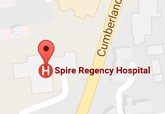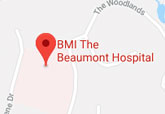Posterolateral Lumbar Fusion
Posterolateral lumbar fusion is a surgical technique that involves correction of spinal problems from the back of the spine by placing bone graft between elements in the back and leaving the disc space intact. Minimally invasive surgical techniques may be used to perform the procedure.
What is the Minimally Invasive Posterolateral Lumbar Fusion surgical approach?
The surgical procedure of posterolateral fusion is similar to posterior lumbar interbody fusion (PLIF). But in this procedure, instead of removing and replacing the disc with the bone graft, the disc remains intact and the bone graft is placed between the transverse processes in the back of the spine. The bone graft promotes the bone healing and supports the spine from the transverse process of one vertebra to the transverse process of the next vertebra.
In a posterolateral fusion, pedicle screws and rods may be used to stabilize the spine until the bone graft heals. Usually four screws and two rods are used to fuse two vertebrae in a single-level fusion. In two-level fusion six screws and two rods can be used to fuse three vertebrae.
Traditional open spine surgery requires cutting or stripping the muscles from the spine. Now-a-days posterolateral fusion can be implemented through minimally invasive spine surgery. This procedure includes a smaller incision and muscle dilation that allows the surgeon to gently separate the surrounding muscles of the spine rather than cutting them.
What is the necessity for Posterolateral Lumbar Fusion surgery?
Patients with spinal instability in their lower back due to degenerative disc disease, spondylolisthesis or spinal stenosis that has not responded to other non-surgical treatment measures such as rest, physical therapy or medications may be recommended for spinal fusion surgery such as Posterolateral Lumbar Fusion. Patients with spinal instability may experience pain, numbness and muscle weakness in the lower back, hips and legs.
Before prescribing Posterolateral Lumbar Fusion surgery your surgeon considers various factors such as the condition to be treated, your age, health, lifestyle and your expected level of activity after the surgery. Have a complete discussion with your spinal care provider regarding the treatment options available.
What is the procedure for Posterolateral Lumbar Fusion surgery?
In this procedure, the patient lies on his or her stomach. The surgeon makes a small incision in the back over the vertebra (e) to be treated. The size of the incision depends on the instrument to be used and the size could be as small as approximately 3 centimetres. Usually 3- to 6- inches of incision is required in traditional open Posterolateral fusion surgery.
The surgeon dilates the surrounding muscles of the spine to access the section of the spine to be stabilized. The lamina, roof of the vertebra, is removed to visualize the nerve roots and the facet joints that are directly over the nerve roots are trimmed to provide the nerve roots more space.
The bone graft is implemented between the transverse processes in the back of the spine. Screws and rods can also be used to stabilize the spine for better healing and fusion.
After the surgery, the small incision is closed and usually it leaves behind a minimal scar.
What is the recovery period for Posterolateral Lumbar Fusion surgery?
After the minimally invasive procedure, most patients are discharged the day after surgery, but a few patients may require prolonged hospitalization. Many patients observe immediate improvement of some or all of their symptoms, but sometimes the improvement of the symptoms may be gradual.
Contribution of a positive approach, realistic expectations and compliance with your doctor's post-surgical instructions helps bring a satisfactory outcome to the surgical procedure. Most patients can resume their regular activities within several weeks.
Have a conversation with the doctor to determine if you are a candidate for minimally invasive surgery or not.
What are the risks or complications of Posterolateral Lumbar Fusion surgery?
Every patient has a particular treatment plan and outcome result which varies from individual to individual. The complications of Posterolateral Lumbar Fusion surgery include infection, nerve damage, blood clots, blood loss, bowel and bladder problems and any problem associated with anaesthesia. The underlying risk of spinal fusion surgery is failure of fusion of vertebral bone and bone graft which usually requires an additional surgery.
Please refer to your physician to obtain a list of indications, adverse effects or precautions, clinical results and other significant medical information related to the Posterolateral Lumbar Fusion surgical procedure.




